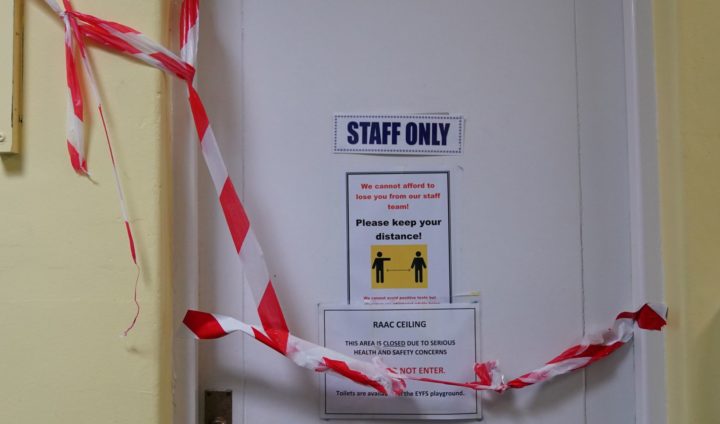The government has emphasised that a return to pandemic-style remote learning for students affected by the unsafe concrete crisis should be brief, lasting only “days, not weeks.” Over 100 schools and colleges, just days before the new school year, have been directed by the Department for Education (DfE) to either partially or fully close their facilities due to concerns about structures constructed with reinforced autoclaved aerated concrete (RAAC).
However, the government insists that the shift to online education should be a last resort and only for a short duration. Instead, schools dealing with the crisis have been advised to seek alternative spaces in nearby schools, community centers, or vacant local office buildings for the initial weeks while structural reinforcements are installed to address RAAC-related safety risks.
Labour has heightened its demands for the government to disclose the complete extent of the RAAC impact, including the publication of a list of affected schools. Schools Minister Nick Gibb has committed to releasing this list in due course, with the DfE planning to do so once all parents are informed and mitigation measures are implemented.
Labour intends to initiate a House of Commons vote next week, seeking to compel the government to publish all official documents related to its handling of the RAAC crisis. Bridget Phillipson MP, the shadow education secretary, asserts the need for transparency regarding the government’s management of this situation and calls for an urgent audit to assess the extent of Conservative ministers’ failure to address the dangerous concrete issue in public buildings.
The Liberal Democrats have called for an emergency Cobra meeting, urging the Prime Minister to address the problem. Education Secretary Gillian Keegan has pledged to inform parliament next week regarding the plan to keep parents and the public informed about the matter.
RAAC, a lightweight form of concrete used in construction from the 1950s to the mid-1990s, has raised concerns as it may have exceeded its operational lifespan and could pose a risk of collapse. Approximately 24 schools in England are believed to have been instructed to fully close due to the presence of RAAC, and more schools could face similar directives in the future.
This issue extends beyond schools, potentially affecting other public sectors such as health, defense, and justice, as well as some private sector buildings. NHS providers have identified 14 hospitals primarily constructed with RAAC, with seven deemed “critical” and unfit for use beyond 2030. Police Scotland has also identified RAAC in three of its buildings out of 65 structures investigated.
Matt Byatt, president of the Institution of Structural Engineers, has warned that any high-rise buildings with flat roofs built between the late 1960s and early 1990s may also contain RAAC, emphasising the potential widespread impact of the problem.







